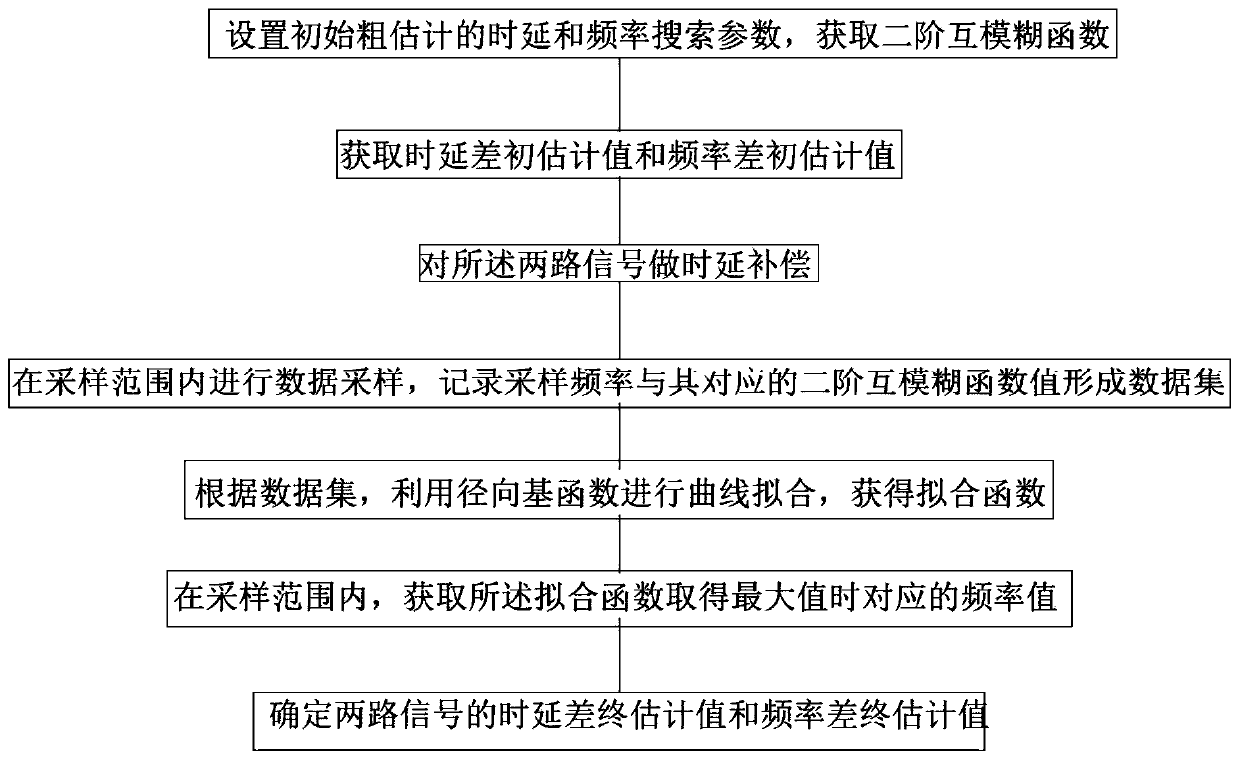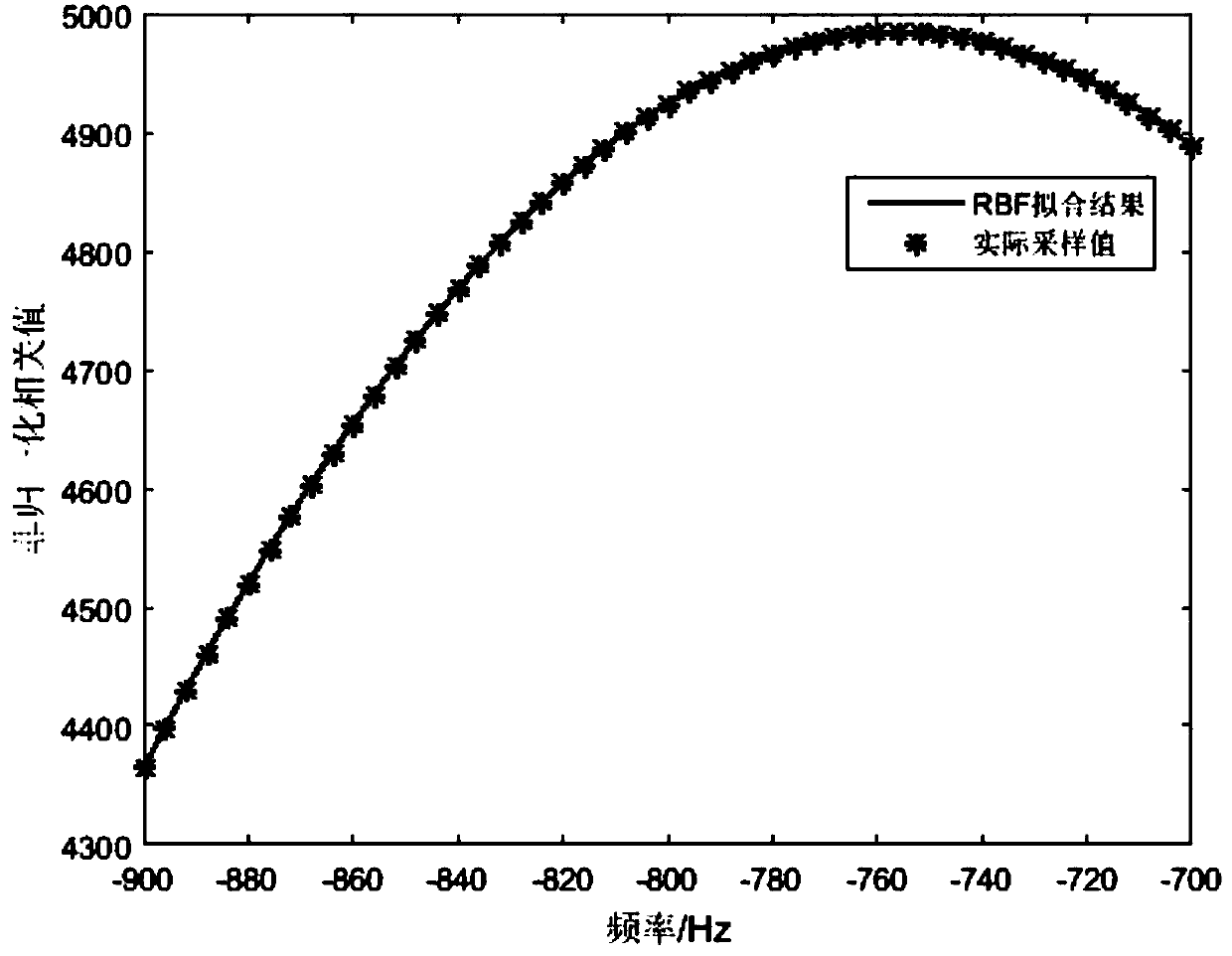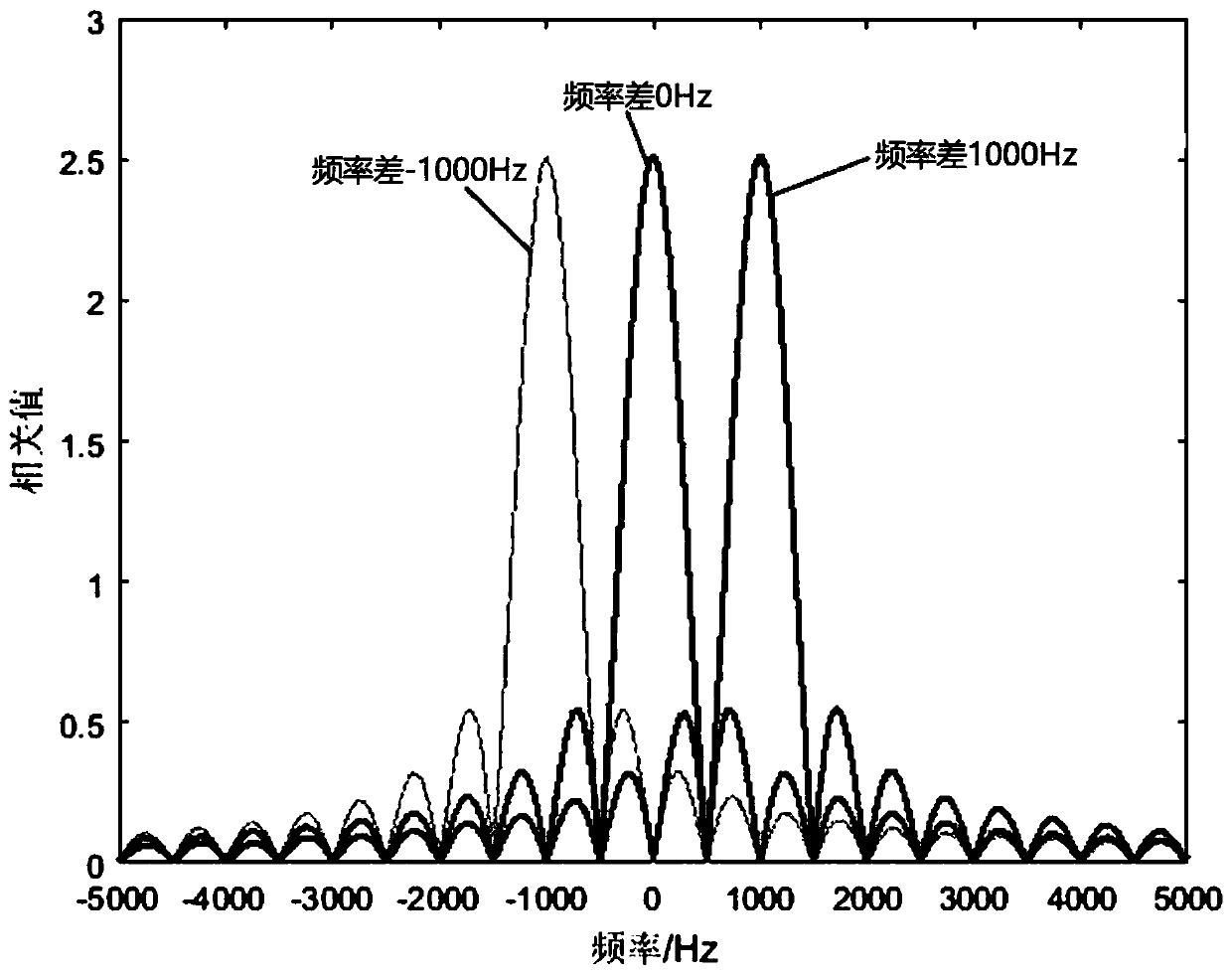A time-frequency second-order cross ambiguity function calculation method based on numerical fitting
A mutual ambiguity function and numerical fitting technology, applied in the field of signal parameter estimation, can solve problems such as large overhead, non-convergent iterations, and high search complexity, and achieve the effect of reducing complexity, reducing the number of sampling points and related operations
- Summary
- Abstract
- Description
- Claims
- Application Information
AI Technical Summary
Problems solved by technology
Method used
Image
Examples
Embodiment 1
[0039] Such as figure 1 as shown, figure 1 It is a flow chart of the calculation method of the time-frequency second-order mutual ambiguity function based on numerical fitting according to the present invention; the calculation method of the time-frequency second-order mutual ambiguity function based on numerical fitting according to the present invention specifically includes the following steps:
[0040] S1, setting the initial time delay and frequency search parameters of the initial rough estimate; the set initial time delay and the frequency search parameters meet the theoretical error lower limit of the second-order mutual ambiguity function;
[0041] Wherein, the frequency search parameters include a frequency search step size f w_step ;For the initial delay search step size T s and the frequency search step size f w_step The setting of , combined with the specific background, is set according to the theoretical error lower limit of the second-order mutual ambiguity fu...
Embodiment 2
[0069] Regarding the symmetry of the second-order mutual ambiguity function in the frequency domain in the step S4, according to the definition of the second-order mutual ambiguity function and the search result expression of the final search, specifically,
[0070] signal x 1 (t) and x 2 The expression of the second-order mutual ambiguity function between (t) is:
[0071]
[0072] And the final estimated value of the delay difference of the final search and frequency difference final estimate by function The τ and f corresponding to the maximum value are given, that is, the search result of the final search The expression is:
[0073]
[0074] Therefore, the final search results can be obtained The final expression of is:
[0075]
[0076] Among them, D is the value of the delay difference within the search range; f D is the value of the frequency difference within the search range, Δf is the frequency deviation value; Δf can take any reasonable frequenc...
PUM
 Login to View More
Login to View More Abstract
Description
Claims
Application Information
 Login to View More
Login to View More - R&D
- Intellectual Property
- Life Sciences
- Materials
- Tech Scout
- Unparalleled Data Quality
- Higher Quality Content
- 60% Fewer Hallucinations
Browse by: Latest US Patents, China's latest patents, Technical Efficacy Thesaurus, Application Domain, Technology Topic, Popular Technical Reports.
© 2025 PatSnap. All rights reserved.Legal|Privacy policy|Modern Slavery Act Transparency Statement|Sitemap|About US| Contact US: help@patsnap.com



